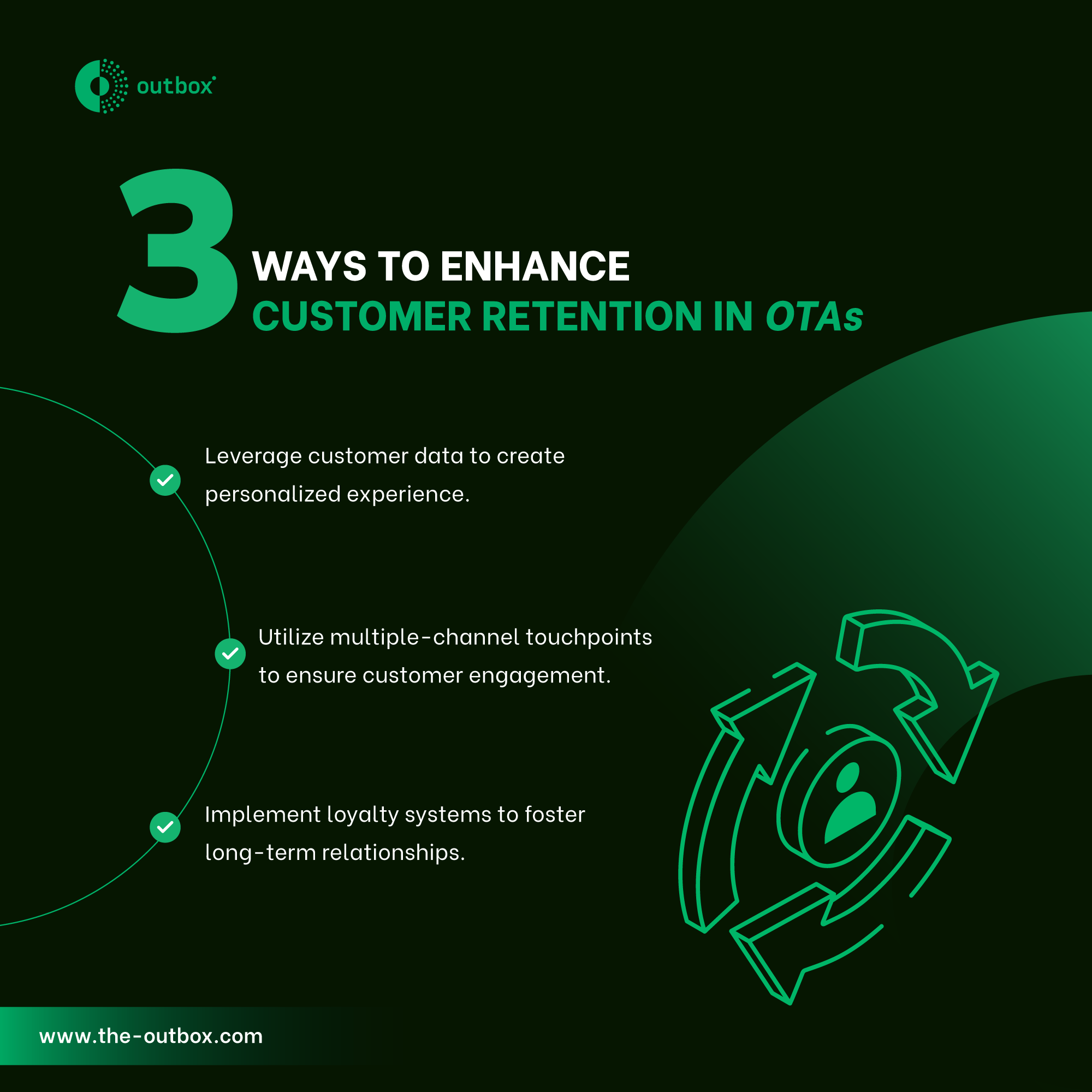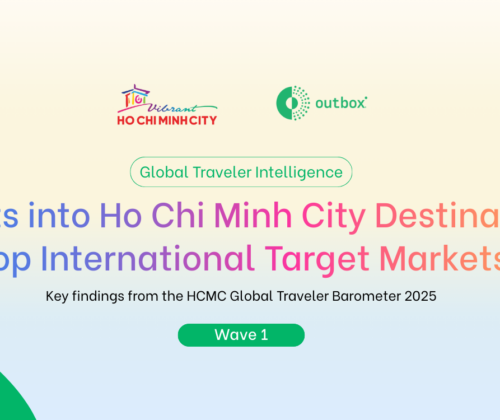In the fiercely competitive online travel market, customer retention is more critical than ever. For Online Travel Agencies (OTAs), the ability to not only attract but retain customers can mean the difference between success and stagnation. With the cost of acquiring new customers continually rising, focusing on retention strategies becomes a cost-effective solution for sustained business growth. This blog delves into the importance of customer retention for OTAs and outlines key strategies for improving retention, supported by insights from the Asia Travel Market Profile powered by Outbox.
Customer Retention and Its Importance for OTAs
Customer retention refers to the strategies businesses use to keep their existing customers returning for more services. In the OTA landscape, this means ensuring that travelers continue to book their flights, hotels, and vacation packages through the same platform, despite having numerous other options at their fingertips.
Retention is crucial because acquiring a new customer is significantly more expensive than retaining an existing one. According to Bain & Company, it costs 6-7 times more to acquire a new customer than to retain an existing one. OTAs, which often spend heavily on marketing and commissions to lure first-time users, face particularly high acquisition costs. This makes retention not just a strategic advantage but a financial necessity. A study by Bain & Company also shows that increasing customer retention by just 5% can boost profits by 25% to 95%.
3 Key Ways to Enhance Customer Retention in OTAs
1. Personalized Experience
Personalization has emerged as a vital tool in retaining customers, particularly in an industry as experience-driven as travel. Travelers today expect tailored recommendations based on their preferences, history, and behavior. Leveraging customer data allows OTAs to curate personalized offers, itineraries, and travel packages, ensuring that customers feel understood and valued.
For example, if a user frequently books trips to Japan for leisure, the OTA can use this data to send personalized suggestions for hotels, activities, or seasonal events in Japan. Such strategies not only enhance customer satisfaction but also increase the likelihood of repeat bookings.
2. Multi-channel engagement
In today’s digital world, travelers engage with multiple platforms throughout their booking journey, from social media and mobile apps to emails, websites and referrals. Limiting marketing efforts to fewer than three touchpoints can result in a maximum reach of just 35%, according to Outbox’s Vietnam Market Profile. To achieve broader engagement, OTAs must implement a multi-channel strategy.
For example, seamless integration across social media ads, email marketing, and mobile notifications ensures that customers remain engaged at various stages of their travel planning process. A user may discover a deal on social media, receive personalized emails about relevant offers, and be reminded to complete their booking through a push notification. This cohesive engagement drives retention by keeping the OTA top of mind throughout the customer’s decision-making journey.
3. Loyalty Programs
Loyalty programs remain one of the most effective tools for increasing customer retention in the travel industry. These programs incentivize repeat bookings by offering rewards such as discounts, free upgrades, or exclusive deals to frequent users. OTAs like Booking.com and Expedia have successfully implemented tiered loyalty systems, where customers earn points or receive special benefits based on their booking frequency.
By offering localized loyalty benefits, such as exclusive deals for popular regional destinations or partnerships with local airlines and hotels, OTAs can create stronger connections with their users.
Loyalty programs also generate valuable customer data, which OTAs can use to further personalize offers and improve engagement across multiple channels.
Data-Driven Strategies for Improving Retention
The key to enhancing customer retention lies in the use of data-driven strategies. OTAs have access to vast amounts of customer data, from booking history to browsing patterns, and leveraging this data can significantly fine-tune their retention efforts.
For example, analyzing the booking frequency and destinations of repeat customers allows OTAs to identify patterns in traveler behavior. This insight can inform marketing campaigns, ensuring that promotions are targeted to customers who are most likely to book again. Additionally, by tracking which communication channels customers interact with the most, OTAs can optimize their multi-channel engagement strategy.
Conclusion
Customer retention is not just a competitive advantage for OTAs; it’s a fundamental strategy for profitability in the face of high acquisition costs. By focusing on personalized experiences, multi-channel engagement, and loyalty programs, OTAs can build lasting relationships with their customers and encourage repeat bookings.
The Asia Travel Market Profile provides OTAs with the actionable insights they need to develop these retention strategies effectively. With detailed data on traveler preferences, engagement trends, and emerging markets, here is how the Asia Travel Market Profile can help:
- Personalized Marketing: Gain deep insights into traveler preferences, allowing you to tailor offers and experiences that resonate with specific audiences, boosting loyalty and repeat bookings.
- Multi-Channel Engagement: The report provides data on trip characteristics, how travelers interact with various channels, helping businesses create cohesive, multi-channel strategies that maximize engagement and customer touchpoints.
- Predictive Analytics: Leverage the report’s analytics to anticipate market trends and traveler behavior, enabling proactive adjustments to offerings that keep customers engaged and coming back.
You want to enhance your customer retention rate? Explore the Asia Travel Market Profile now and discover how its data-driven insights can help you unlock the full potential of your business.





